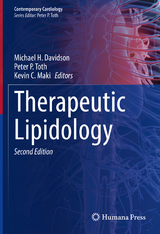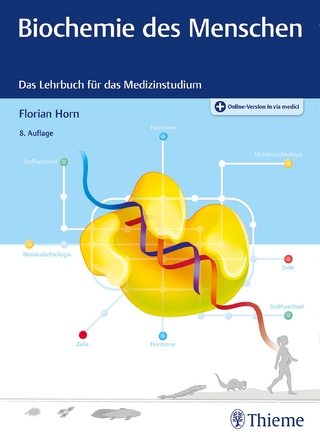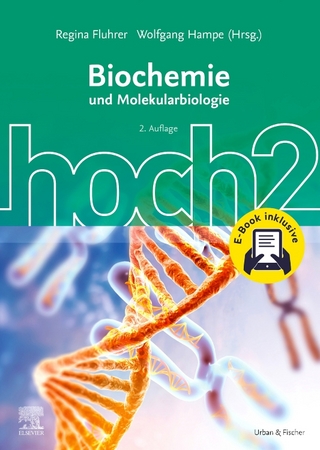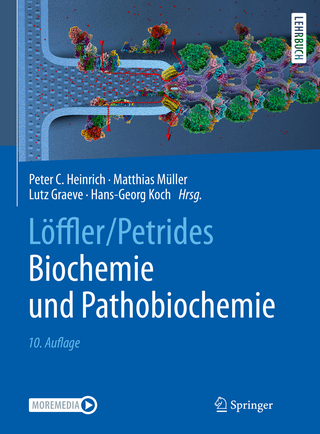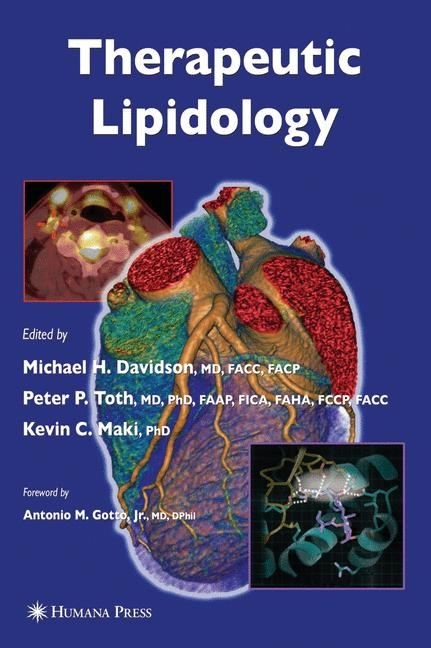
Therapeutic Lipidology
Humana Press Inc. (Verlag)
978-1-60327-244-5 (ISBN)
- Titel erscheint in neuer Auflage
- Artikel merken
This reference will serve as a stimulus to the reader to continue to learn about the ever changing and fascinating field of therapeutic lipidology. It will also empower readers to improve and extend the lives of the patients they so conscientiously serve.
Chapter 1Lipoprotein Metabolism and Vascular BiologyBrian G. Choi, M.D., M.B.A.Juan J. Badimon, Ph.D.Pedro R. Moreno, M.D.Valentin Fuster, M.D., Ph.D.Lipoprotein ClassificationApolipoprotein ClassificationLipid MetabolismHDL MetabolismLipoprotein Metabolism RegulationLipids in Vascular Biology and AtherothrombosisChapter 2Genetic Disorders of Lipoprotein MetabolismMarina Cuchel, M.D., Ph.D.Atif Qasim, M.D.Daniel J. Rader, M.D.Lipid Disorders Involving Elevated TriglyceridesInherited Syndromes of Elevated LDL-CholesterolInherited Syndromes of Low LDL-CholesterolInherited Syndromes of Low HDL-CInherited Syndromes of Elevated HDL-C LevelsChapter 3International Guidelines for Dyslipidemia ManagementCathleen E. Maki, R.N., M.S.N., N.P.The Canadian GuidelinesThe European GuidelinesJoint British Societies GuidelinesChapter 4Pathophysiology and Management of Dyslipidemias Associated withObesity, Type 2 Diabetes and Other Insulin Resistant StatesKevin C. Maki, Ph.D.Obesity and Type 2 Diabetes MellitusCardiometabolic Risk SyndromeLipid Abnormalities Associated with Insulin ResistanceFunctions of InsulinExcessive Production of Very-low Density Lipoproteins (VLDL): ThePrimary Lipid Abnormality in the Insulin Resistant StateReasons for Elevated Free Fatty Acid Levels in Insulin Resistant StatesFormation of Small, Dense LDL ParticlesMechanisms Linking Insulin Resistance to Low HDL CholesterolActivities of Lipoprotein and Hepatic Lipases and Their Relationshipsto Atherogenic DyslipidemiaLifestyle Management for Atherogenic DyslipidemiaDrug Therapies for Atherogenic DyslipidemiaIntensification of Efforts to Lower LDL-C as a Means of Achieving theNon-HDL-C GoalTargeting Triglyceride-rich Lipoprotein Reduction as a Means ofAchieving Non-HDL-C GoalManagement of Diabetic DyslipidemiaChapter 5C-Reactive Protein and Other Inflammatory Markers in CardiovascularDiseaseNatalie Khuseyinova, M.D.Wolfgang Koenig, M.D., Ph.D.C-reactive ProteinCytokinesMarkers of Hemostasis, that are also Acute Phase ReactantsPlasminogen Activator Inhibitor-1D-DimerVon Willebrand FactorWhite Blood Cell Count Lipid-related BiomarkersOxidised (Ox) LDLLipoprotein-associated Phospholipase A2 (Lp-PLA2)AdiponectinChapter 6Dietary Prescriptions to Control Dyslipidemias and Coronary Disease RiskMargo A. Denke, M.D.A Diet-Enthusiast's Summary of The Evolving Role of DietPre-Statin Cholesterol Lowering (1960-1987)Early Statin Years: LDL Lowering (1987-1994)Landmark Statin Trials, LDL Lowering and Eruption of the MetabolicSyndrome (1994-2004)Lipid Therapy Beyond LDL and CHD Prevention Dietary Therapies BeyondLipids 2004-presentChapter 7Pharmacological Therapy for Cardiovascular Disease: Current andEmerging TherapiesMichael H. Davidson, M.D., F.A.C.C., F.A.C.P. StatinsEzetimibeBile Acid SequestrantsNiacinFibratesOmega-3 Fatty Acids Chapter 8Effects of Thiazolidinediones on Serum LipoproteinsAnjli Maroo, M.D., R.V.T.W. H. Wilson Tang, M.D., F.A.C.C.Mechanisms of TZD Actions on Serum LipoproteinsClinical Evidence of Lipid Lowering Effects of TZDsMeta-Analyses of Pioglitazone and Rosiglitazone TrialsProspective Comparative Clinical StudiesConcomitant TZD and Statin TherapyOutcome StudiesFuture DirectionsChapter 9High-Density LipoproteinsPeter P. Toth, M.D., Ph.D.Antiatherogenic Effects of HDLEpidemiologic Studies Evaluating the Relationship between HDL and Riskfor Cardiovascular DiseaseThe Definition and Prevalence of Low HDLEffects of Lifestyle Modification on HDLPharmacologic Therapy for Low Serum HDL-CHDL Therapies in DevelopmentChapter 10Management of HypertriglyceridemiaReginald Labossiere, ?Ira J. Goldberg, ?PhysiologyCauses of Human HypertriglyceridemiaSecondary Causes of HypertriglyceridemiaTreatments/RecommendationsChapter 11Lowering Low Density Lipoprotein Cholesterol Levels to ReduceAtherosclerotic Coronary Heart Disease RiskHarold Bays, M.D., F.A.C.P.LDL-C PathophysiologyBenefits of Reducing LDL-C with Lipid-Altering DrugsLDL-C Treatment GoalsStatinsEzetimibeResins and PolymersCombination Cholesterol Absorption Inhibitor & StatinChapter 12Lipoprotein(a) as an Emerging Risk Factor for Atherothrombosis:Principles from Bench to BedsideMichael B. Boffa, ?Santica M. Marcovina, ?Marlys L. Koschinsky, ?PerspectivesStructure of Lipoprotein(a) and Apolipoprotein(a): FunctionalImplicationsDetermination of Plasma Lp(a) LevelsModulation of Plasma Lipoprotein(a) LevelsLp(a) as an Emerging Risk Factor for Vascular Disease: ClinicalPerspectivesThe Relationship Between Apo(a) Isoform Size and CardiovascularDisease RiskProposed Mechanisms of Lp(a) PathogenicityChallenges in Lp(a) MeasurementProgress in the Standardization of Lp(a) MeasurementNon-Immunologically-Based Methods for Lp(a) MeasurementThe Impact of Lp(a) Method Inaccuracy on the Interpretation of Lp(a)ValuesSuggested Use of Lp(a) in Clinical PracticeChapter 13Familial Hypercholesterolemia and LDL ApheresisPatrick M. Moriarty, M.D.Cheryl A. Gibson, Ph.D.Klaus Flechsenhar, M.D.Apheresis MethodsVascular Effects in Addition to LDL Lowering and Plaque RegressionAlternative ApplicationsChapter 14Phytosterolemia Synthesis, Trafficking and Excretion of Cholesterol,and Noncholesterol SterolsThomas Dayspring, M.D., F.A.C.P.CholesterolNoncholesterol SterolsStanolsIntestinal Absorption of SterolsPhamacologic Modulation of Sterol AbsorptionSitosterolemia (Phytosterolemia)Chapter 15Utilization of Lipoprotein SubfractionsWilliam C. Cromwell, M.D.James D. Otvos, Ph.D.Physiologic Origins of Lipoprotein Particle HeterogeneityLipoprotein Heterogeneity in Exogenous Lipid TransportLipoprotein Heterogeneity in Endogenous Lipid TransportLipoprotein Heterogeneity in Reverse Cholesterol TransportLipoprotein Assay Methods Gradient Gel ElectrophoresisDensity Gradient UltracentrifugationNuclear Magnetic Resonance SpectroscopyAnalytic Implications of Lipoprotein HeterogeneityRelationship of LDL Subfractions with CHD OutcomesRelationship of HDL Particle Subclasses and CHD RiskRelationship of Triglyceride Rich Lipoprotein Subclasses and CHD RiskChapter 16Cardiovascular Disease in Women: The Management of DyslipidemiaEmma A. Meagher, M.D.Identifying Cardiovascular RiskCardiovascular Risk AssessmentTreatmentLifestyle and Behavioral ChangesDrug TherapyChapter 17Management of Lipids in the ElderlyMicah J. Eimer, M.D.Neil J. Stone, M.D.Reducing Risk in the Elderly through Lipid TreatmentReview of Relevant Studies Published After ATP IIISafety ConcernsPredicting Risk in the ElderlyMeasures of Subclinical Cardiovascular Disease in Older AdultsChapter 18The Clinical Use of Non-Invasive Modalities in the Assessment ofAtherosclerosisAtul R. Chugh, M.D.Samir N. Patel, M.D.Venkataraman Rajaram, M.D.Rachel NeemsMatt FeinsteinMarshall Goldin, M.D.Steven B. Feinstein, M.D.Review of Non-invasive Cardiovascular Imaging TechnologiesCarotid Artery Intima-Media ThicknessLeft Ventricular EchocardiographyCoronary Computed Tomography ImagingEBCTMulti-Detector Row Computed Tomography (MDCT)Cardiac Magnetic Resonance ImagingAnkle-Brachial IndexBrachial Artery Reactivity TestingNon-Invasive Assessment of Coronary Flow ReserveImaging Vulnerable PlaquePlaque Neovascularization: In Vitro and In VivoChapter 19Management of Dyslipidemia in ChildrenStephen R. Daniels, M.D., Ph.D.Early AtherosclerosisClinical Approach to Cholesterol Abnormalities in ChildrenThe Population ApproachRecommended DietRecommendations for Children 2 and OlderThe Individual ApproachTreatment of Elevated Cholesterol. Who Should be Treated?What is the Target for Treatment?How Should Patients be Treated?Diet TherapyOther Dietary Approaches to TherapyPharmacologic InterventionBile Acid Binding AgentsHMG-CoA Reductase InhibitorsCholesterol Absorption InhibitorsFibric Acid DerivativesChapter 20The Allied Health Professional's Role in the Management of DyslipidemiaLynne T. Braun, Ph.D., R.N., C.N.P.Joan E. Mathien, B.S.N.Lipid Clinic/Prevention Clinic ModelsNurse's RoleDietitian's RoleExercise Specialist's RoleClinical Psychologist's RoleChapter 21Development and Management of a Lipid ClinicCarol M. Mason, A.R.N.P., F.A.H.A.Rationale for a Lipid ClinicThe Lipid Clinic PlanA Sample Pro FormaLipid Clinic ServicesClinical ResearchBecoming a Lipid SpecialistLipid Clinic ResourcesLipid Clinic OrganizationMarketing Your Lipid ClinicDocumentation, Coding, and ReimbursementCommunicationResources for Lipid Clinic ProvidersChapter 22The American Board of Clinical Lipidology Physician CertificationProgramNicola A. Sirdevan, M.P.A.Why is There a Board Certification Program in Clinical Lipidology?Eligibility CriteriaThe Certifying ExaminationAttainment of Designation and RedesignationTo ApplyContinuing Education and Lifelong LearningCertification for Allied Health Professionals
| Erscheint lt. Verlag | 7.3.2011 |
|---|---|
| Reihe/Serie | Contemporary Cardiology |
| Zusatzinfo | 130 black & white illustrations, 90 black & white tables, 4 black & white halftones, 126 black & white line drawings |
| Verlagsort | Totowa, NJ |
| Sprache | englisch |
| Maße | 178 x 254 mm |
| Einbandart | Paperback |
| Themenwelt | Medizin / Pharmazie ► Medizinische Fachgebiete |
| Studium ► 1. Studienabschnitt (Vorklinik) ► Biochemie / Molekularbiologie | |
| ISBN-10 | 1-60327-244-5 / 1603272445 |
| ISBN-13 | 978-1-60327-244-5 / 9781603272445 |
| Zustand | Neuware |
| Haben Sie eine Frage zum Produkt? |
aus dem Bereich
